A comprehensive pack redesign can now lift sales as effectively as a TV ad campaign. Sean McAllister explores this vital part of marketing at point of purchase
Whether it’s the new K-lock on Kellogg’s boxes of Corn Flakes or the ‘contemporary’ bottle designed for Baileys, packaging is certainly in the spotlight. But if you are selling more of a commodity product, say a bottle of ketchup, a can of soup or a loaf of bread, can the right packaging really make that much difference in capturing extra sales?
The answer is ‘yes’ because manufacturers are finding it increasingly expensive to reach their target consumers as media advertising channels fragment.
Point of purchase is, in fact, showing a greater return on investment and putting a product in the right packaging, whether it’s an aesthetically pleasing bottle or a widget, can boost sales in the same way as a multi-million pound expenditure on a TV advertising campaign used to do.
“Awareness among manufacturers that point of purchase can have a greater return on investment is growing,” says Alistair Quinn, sales director of marketing agency The Design Group.
“It has become more difficult to communicate a brand message via advertising. So with 70% of purchasing decisions made at the point of purchase, there is an obvious benefit in capitalising on the visual differentiation of a brand by investing in innovative packaging to create noise on-shelf.”
Packaging can also convey the message that a product has additional unspoken attributes, “like a particular clunk of a car door can give the impression that the car is well manufactured”, says Nick Verebelyi, director for 3D and packaging at brand consultancy Design Bridge.
Packaging innovations are also reinvigorating mature and static categories. For example, the introduction of tubes in the yogurt category have enabled younger children to consume yogurt and made it more portable, while pouch technology allows rice to be cooked in 90 seconds from the microwave and has attracted new time-poor consumers.
For Heinz soup - a category leader with a high level of penetration - the key to growing sales was to find a new way for consumers to use the product, says Heinz grocery division business director Robin Walker. “Packaging is a real way of innovating in markets that have been around for a long time,” he says.
So in June last year, Heinz launched microwaveable soup cups. A special insulating mechanism keeps the outside of the cup cool, so it can be held in the hand immediately after coming out of the microwave and consumed on-the-go. This, says Walker, took Heinz soup into a new usage occasion - lunchtime - and into new locations, such as forecourts. Since its launch, sales are estimated to have reached more than £7m, with zero cannibalisation of tinned soup sales.
At the same time Heinz launched another packaging innovation based on technology used in shower gel packaging - Heinz Tomato Ketchup Top Down. The opening is now at the base of the new bottle and not the top and Heinz expects sales of £9m to £10m, which represents between 7% and 8% of the ketchup market.
The reason for its popularity, says The Design Group’s Quinn, is that the packaging design met a consumer truth that Heinz already knew - “that many consumers store ketchup upside down”.
“Consumer insights are key,” says Walker. Heinz discovered that consumers wanted a product that was less messy and didn’t leave wastage - all it had to do was find a solution through the packaging.
Consumer insights were the reason for Kellogg revamping its Corn Flakes packaging, first with foil packaging in March 2003 and then with the much-publicised K-lock re-closable box in January.
Kellogg’s UK marketing director Michael Allen says the new K-lock keeps out twice as much airborne moisture over a three-week period than the old style closure with the bag scrunched down, keeping the Corn Flakes crisp.
Not everyone is impressed with the new box, however. “Kellogg made a big song and dance about the K-lock but the reality is that the packaging is disappointing,” says Verebelyi. “It’s just a couple of creases into the cardboard box, which requires a great deal of head scratching from the consumer - like opening a milk carton.”
However Verebelyi admits it achieved what was probably its real objective: getting Kellogg’s Corn Flakes noticed.
But whether you think the K-lock is like practising origami, it does have a consumer benefit (freshness) as all packaging innovations must have, says The Design Group’s Quinn. “Functional packaging must have genuine functional value because consumers will see through a gimmick.”
However packaging doesn’t always need a new functional benefit to attract attention and boost sales.
One of the most successful recent packaging makeovers came from British Bakeries. In June 2001, it re-launched Hovis in eye-catching wrappers with images of baked beans, cucumbers, cheese and tomatoes. It was part of a strategy that included new advertising, an upgraded product and new product development. It was a big move for the 115-year-old brand but Hovis had been stuck in a rut and was losing value because of EDLP strategies and a perception that it was old-fashioned.
British Bakeries marketing director Paula Moss says a radical re-interpretation was needed. “We wanted people to stop in the aisles and reappraise the brand.”
The new packaging had the desired effect. Volume sales grew by 28% in the first year, even though Hovis had increased its price, and just over half of this growth was attributed to the new packaging.
The packaging also won the Grand Prix award at the Design Business Association’s design effectiveness awards for making Hovis the category leader in both brown and white bread for the first time in its history. It communicated on an emotional level, says Dominic England, senior consultant at branding agency Dragon. “Hovis identified with an emotional need and celebrated the best things about bread - beans on toast.”
Smoothie specialist Innocent has done a similar job, says England. “It’s created a growing brand with little or no advertising spend - 85% of its communication is on pack. The packaging has no different functional benefit - instead, it portrays the emotional benefit of happiness.” Clearly any packaging revamp must be thought through and Heinz’s Walker identifies two golden rules: don’t make it too complicated and don’t launch until it is certain the new packaging works.
Unfortunately Scottish Courage failed on the first with its Foster’s CoolKeg - a self-dispensing, self-cooling 35-pint keg of lager. It was scrapped after nine months because of technical and logistical problems, including the weight of the keg. Consumers had to return the keg to get back their £30 deposit and they did not like that. In addition Foster’s found it difficult to keep track of the kegs and they were expensive to refill.
Tim Orrell, account director at package design consultancy Watt Design, has more words of wisdom. He says a new package design must last the lifetime of the product in order to ensure repeat purchases. “Ask yourself, how many times a week do you sweep cereal off the floor after the pack makes a leap for it because the box doesn’t fit properly in the unit.
“Packaging that sells is vital, but if we sell for the sweet moment of purchase, we’re going to disappoint the customer. Impractical design, poor formats and less than robust solutions will prevent further purchases and we will simply be putting business in the hands of Mr Dyson, Mr Sheen and Mr Muscle.”
Whether it’s the new K-lock on Kellogg’s boxes of Corn Flakes or the ‘contemporary’ bottle designed for Baileys, packaging is certainly in the spotlight. But if you are selling more of a commodity product, say a bottle of ketchup, a can of soup or a loaf of bread, can the right packaging really make that much difference in capturing extra sales?
The answer is ‘yes’ because manufacturers are finding it increasingly expensive to reach their target consumers as media advertising channels fragment.
Point of purchase is, in fact, showing a greater return on investment and putting a product in the right packaging, whether it’s an aesthetically pleasing bottle or a widget, can boost sales in the same way as a multi-million pound expenditure on a TV advertising campaign used to do.
“Awareness among manufacturers that point of purchase can have a greater return on investment is growing,” says Alistair Quinn, sales director of marketing agency The Design Group.
“It has become more difficult to communicate a brand message via advertising. So with 70% of purchasing decisions made at the point of purchase, there is an obvious benefit in capitalising on the visual differentiation of a brand by investing in innovative packaging to create noise on-shelf.”
Packaging can also convey the message that a product has additional unspoken attributes, “like a particular clunk of a car door can give the impression that the car is well manufactured”, says Nick Verebelyi, director for 3D and packaging at brand consultancy Design Bridge.
Packaging innovations are also reinvigorating mature and static categories. For example, the introduction of tubes in the yogurt category have enabled younger children to consume yogurt and made it more portable, while pouch technology allows rice to be cooked in 90 seconds from the microwave and has attracted new time-poor consumers.
For Heinz soup - a category leader with a high level of penetration - the key to growing sales was to find a new way for consumers to use the product, says Heinz grocery division business director Robin Walker. “Packaging is a real way of innovating in markets that have been around for a long time,” he says.
So in June last year, Heinz launched microwaveable soup cups. A special insulating mechanism keeps the outside of the cup cool, so it can be held in the hand immediately after coming out of the microwave and consumed on-the-go. This, says Walker, took Heinz soup into a new usage occasion - lunchtime - and into new locations, such as forecourts. Since its launch, sales are estimated to have reached more than £7m, with zero cannibalisation of tinned soup sales.
At the same time Heinz launched another packaging innovation based on technology used in shower gel packaging - Heinz Tomato Ketchup Top Down. The opening is now at the base of the new bottle and not the top and Heinz expects sales of £9m to £10m, which represents between 7% and 8% of the ketchup market.
The reason for its popularity, says The Design Group’s Quinn, is that the packaging design met a consumer truth that Heinz already knew - “that many consumers store ketchup upside down”.
“Consumer insights are key,” says Walker. Heinz discovered that consumers wanted a product that was less messy and didn’t leave wastage - all it had to do was find a solution through the packaging.
Consumer insights were the reason for Kellogg revamping its Corn Flakes packaging, first with foil packaging in March 2003 and then with the much-publicised K-lock re-closable box in January.
Kellogg’s UK marketing director Michael Allen says the new K-lock keeps out twice as much airborne moisture over a three-week period than the old style closure with the bag scrunched down, keeping the Corn Flakes crisp.
Not everyone is impressed with the new box, however. “Kellogg made a big song and dance about the K-lock but the reality is that the packaging is disappointing,” says Verebelyi. “It’s just a couple of creases into the cardboard box, which requires a great deal of head scratching from the consumer - like opening a milk carton.”
However Verebelyi admits it achieved what was probably its real objective: getting Kellogg’s Corn Flakes noticed.
But whether you think the K-lock is like practising origami, it does have a consumer benefit (freshness) as all packaging innovations must have, says The Design Group’s Quinn. “Functional packaging must have genuine functional value because consumers will see through a gimmick.”
However packaging doesn’t always need a new functional benefit to attract attention and boost sales.
One of the most successful recent packaging makeovers came from British Bakeries. In June 2001, it re-launched Hovis in eye-catching wrappers with images of baked beans, cucumbers, cheese and tomatoes. It was part of a strategy that included new advertising, an upgraded product and new product development. It was a big move for the 115-year-old brand but Hovis had been stuck in a rut and was losing value because of EDLP strategies and a perception that it was old-fashioned.
British Bakeries marketing director Paula Moss says a radical re-interpretation was needed. “We wanted people to stop in the aisles and reappraise the brand.”
The new packaging had the desired effect. Volume sales grew by 28% in the first year, even though Hovis had increased its price, and just over half of this growth was attributed to the new packaging.
The packaging also won the Grand Prix award at the Design Business Association’s design effectiveness awards for making Hovis the category leader in both brown and white bread for the first time in its history. It communicated on an emotional level, says Dominic England, senior consultant at branding agency Dragon. “Hovis identified with an emotional need and celebrated the best things about bread - beans on toast.”
Smoothie specialist Innocent has done a similar job, says England. “It’s created a growing brand with little or no advertising spend - 85% of its communication is on pack. The packaging has no different functional benefit - instead, it portrays the emotional benefit of happiness.” Clearly any packaging revamp must be thought through and Heinz’s Walker identifies two golden rules: don’t make it too complicated and don’t launch until it is certain the new packaging works.
Unfortunately Scottish Courage failed on the first with its Foster’s CoolKeg - a self-dispensing, self-cooling 35-pint keg of lager. It was scrapped after nine months because of technical and logistical problems, including the weight of the keg. Consumers had to return the keg to get back their £30 deposit and they did not like that. In addition Foster’s found it difficult to keep track of the kegs and they were expensive to refill.
Tim Orrell, account director at package design consultancy Watt Design, has more words of wisdom. He says a new package design must last the lifetime of the product in order to ensure repeat purchases. “Ask yourself, how many times a week do you sweep cereal off the floor after the pack makes a leap for it because the box doesn’t fit properly in the unit.
“Packaging that sells is vital, but if we sell for the sweet moment of purchase, we’re going to disappoint the customer. Impractical design, poor formats and less than robust solutions will prevent further purchases and we will simply be putting business in the hands of Mr Dyson, Mr Sheen and Mr Muscle.”








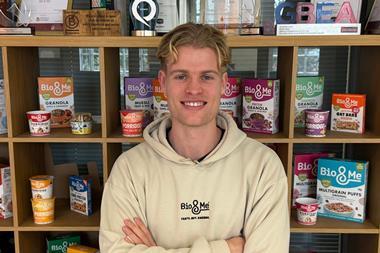
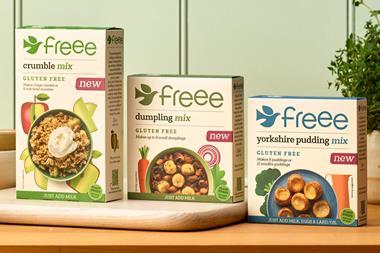

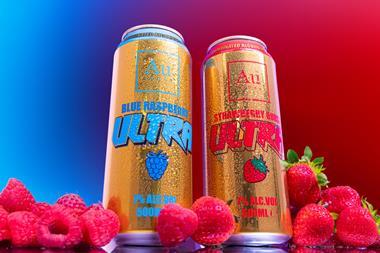

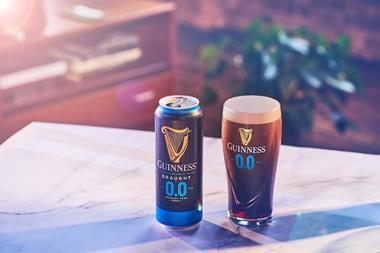
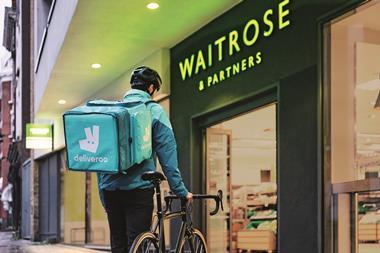
No comments yet